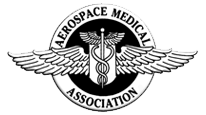Pilot Medical Solutions has helped thousands of pilots with color vision issues to obtain unrestricted FAA medical certification. This involves obtaining FAA accepted testing which is not usually available from Aviation Medical Examiners or local medical facilities.
Using Pilot Medical Solutions helps to prevent pilots from having permanent restrictions placed upon their flying priviledges.
Contact Pilot Medical Solutions – Get help today
MORE INFORMATION ON COLOR VISION
Dr. Jeff Baggish, MD, CFI-IA
What is color blindness?
The human eye relies on its 6 – 7 million cone cells and 100- 130 million rod cells to produce normal vision. The cones—blue, green, and red—are located in the center of the retina —the part of the eye that receives images from the lens and converts them to electrical signals to send to the brain— and are responsible for color vision, light adaptation, and fine detail. The rods are located in the periphery of the retina and are responsible for night vision, brightness perception, and distinguishing shapes.
A person with normal trichromatic (three colors) vision can identify over 7 million different colors! However, 8% (1 in 12) of the men and 0.5% (1 in 200) of the women in North America have fewer cones than normal and are said to have a color vision deficiency. Because the overwhelming majority of these people can distinguish colors to some extent, it is inaccurate to label them as color “blind.”
Red-green deficiency is the most common color vision abnormality. The mildest forms of this deficiency are protanomaly—where blue-green and red-purple are perceived as an indistinct grayish shade—and deuteranomaly—where green and red-purple are perceived as an indistinct grayish shade. Both of these defects are forms of anomalous trichromatism, which means that blue, green, and red cones are present, but the pigments contained within them are altered. Half of the people with anomalous trichromatism can make precise color matches (but not as precisely as those with normal color vision) and are said to have a simple anomaly, while the other half cannot and are said to have an extreme anomaly. A more pronounced form of red-green deficiency is called dichromatism (two colors), in which one of the three cone types is absent. Dichromatism is divided into two subtypes, protanopia—where blue-green and red-purple are perceived as gray—and deuteranopia—where green and red-purple are perceived as gray.
The rarest form of color deficiency is monochromatism (one color), which is divided into rod and cone subtypes. A person with cone monochromatism has good central vision but confuses all colors, because two of the three cone types are missing. A person with rod monochromatism, or achromatopsia (no color), has no cones at all and sees everything in shades of gray. People with achromatopsia have poor vision and difficulty adjusting to bright light, so it’s fortunate that this abnormality affects only 1 person in 33,000 in the United States.
Although color vision deficiencies can be caused by eye diseases or normal aging, the majority are inherited as a gene attached to the X chromosome. This explains why men, who have only one X chromosome, are far more susceptible to color vision abnormalities than women, who have two. An affected man passes the color-deficiency gene to all of his daughters, who then become unaffected carriers; his sons get his Y chromosome and have normal color vision. Each son of a carrier female then has a 50-50 chance of getting the gene from his mother. Therefore, the typical scenario is a man inheriting the color-deficiency gene from his maternal grandfather. For a woman to be color deficient, she would have to have an affected father and mother who was at least a carrier; even then, her odds of getting the gene would be only 50-50.
How does this affect me as a pilot?
Color vision is essential for recognizing aircraft position lights, light-gun signals, airport beacons, approach-slope indicators, and chart symbols, especially at night. The 14 CFR Part 67 regulations, revised on September 16, 1996, state that a pilot must have “the ability to perceive those colors necessary for the safe performance of airman duties” for all medical certification classes.
How can I find out if I have a color vision deficiency?
Many student pilots with a color vision deficiency don’t know they have it, because it doesn’t affect their daily lives. Therefore, most learn about it during their first visit to an aviation medical examiner (AME). This is unfortunate, because the AME is required by the FAA to prohibit anyone failing a color vision test from flying at night or by reference to light-gun signals.
If you already have a color vision restriction Pilot Medical Solutions can often help you remove this from your medical certificate? Pilot Medical Solutions has helped many pilots with this delicate FAA medical process. Contact us to find out how we can help you and prevent permanent restrictions.
Help with this condition | FAA Medical Standards | Color Vision Test



